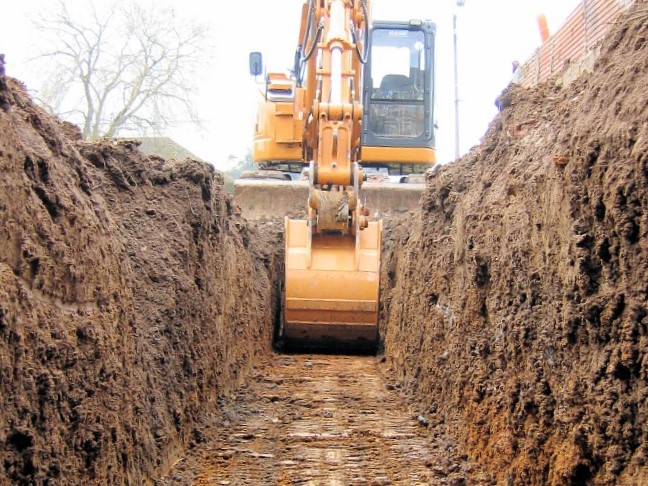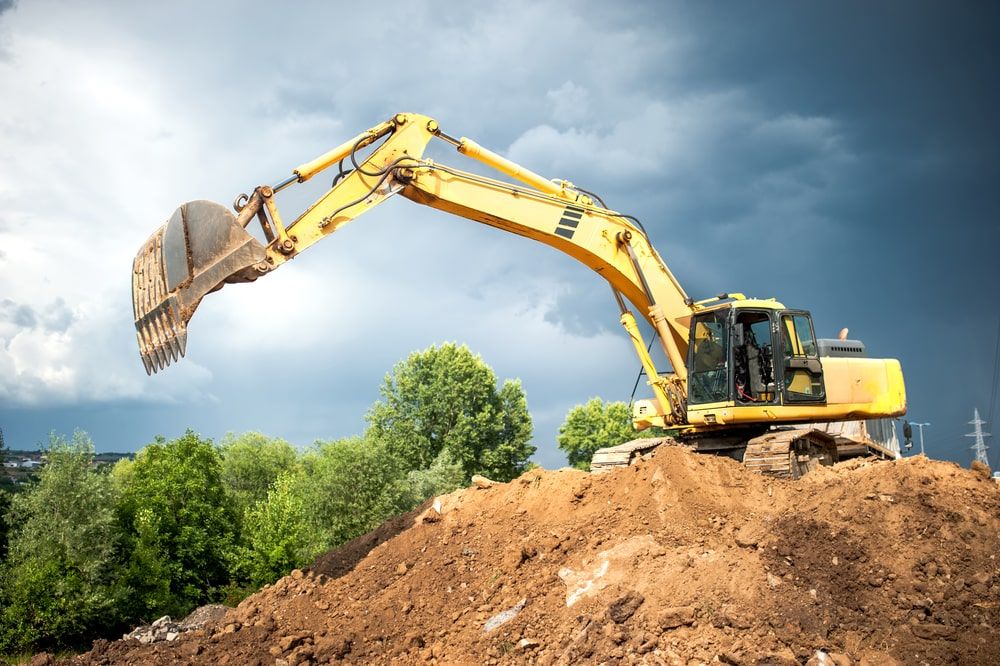Lancaster Trenching - Specialist Trenching Solutions in Lancaster, Ohio
Lancaster Trenching - Specialist Trenching Solutions in Lancaster, Ohio
Blog Article
Revealing the Art of Excavation: Pro Tips for Safe and Productive Digging
In the world of excavation, the mastery of risk-free and effective digging is an art type that needs adherence, understanding, and accuracy to well-known practices. As dirt is transformed and planet is moved, the ins and outs of excavation disclose themselves, requiring a keen understanding of devices, soil make-up, safety procedures, and environmental factors to consider. The proficiency needed to browse these components effectively can imply the distinction between an effective excavation task and a possible disaster. By untangling the layers of this detailed process, a world of approaches and insights awaits those looking for to elevate their excavation skills to brand-new heights.
Significance of Correct Equipment
To ensure the security and effectiveness of any kind of excavation project, utilizing the ideal devices is paramount. The right devices not just enhance performance however also mitigate dangers related to digging. Excavation tasks vary in extent and intricacy, ranging from small property landscape design jobs to massive building tasks. Despite the project size, having the correct devices can make a substantial distinction in the outcome.
These functional makers come in different dimensions to match various task demands. Small excavators are ideal for smaller jobs, while bigger excavators take on extra extensive tasks effectively.
Apart from excavators, other crucial devices includes dump trenchers, excavators, and vehicles. Discard trucks are crucial for getting rid of and transporting excavated materials, while trenchers are used for excavating deep and slim trenches. Excavators succeed in jobs that call for pushing big amounts of dirt or particles. By purchasing the ideal tools, excavation tasks can be completed securely, on time, and with accuracy.
Comprehending Soil Make-up
A detailed understanding of soil make-up is essential for implementing excavation jobs with precision and safety and security. Understanding the various kinds of dirt is critical as it directly affects excavation techniques, tools selection, and total job efficiency. Dirt composition commonly contains four major components: sand, silt, clay, and organic matter. Each component has one-of-a-kind buildings that influence how soil responds to excavation procedures.
Silt bits are smaller sized than sand but larger than clay, supplying modest drain and communication. Organic matter, such as decaying plant product, impacts soil fertility and stability.
Before beginning excavation, performing dirt tests to establish its composition and qualities is necessary. This details aids in choosing the proper equipment, carrying out precaution, and creating excavation methods tailored to the particular soil problems - lancaster excavation. By comprehending dirt structure, excavation experts can improve task results while making certain safety and security and adherence to best techniques
Precaution and Procedures
Understanding dirt composition is the foundation whereupon safety actions and methods for excavation tasks are constructed, making sure the wellness of employees and the success of the endeavor. When it concerns safety and security throughout excavation, there are numerous crucial actions that should be executed to alleviate dangers and prevent investigate this site accidents.
Firstly, prior to any type of digging starts, a detailed evaluation of the site need to be performed to determine any type of potential risks such as below ground utilities, unpredictable dirt conditions, or nearby frameworks that could position a danger. It is important to have a skilled individual supervise the excavation process to make sure that all safety protocols are complied with purely.
In addition, all employees involved in the excavation must be properly educated in secure excavating techniques and the appropriate operation of equipment. By adhering to these security actions and protocols, excavation tasks can be finished successfully and without occurrence.
Effective Excavation Planning
When embarking on an excavation task, thorough preparation is vital to ensure performance, security, and effective outcomes. Efficient excavation preparation involves several key actions that are crucial for the smooth execution of the task.
As soon as the site assessment is total, the next action is to create a clear timeline and timetable for the excavation tasks. This weblink consists of establishing the sequence of jobs, devices needs, and manpower allotment. Proper scheduling helps prevent delays and makes certain that the task remains on track.

Additionally, interaction amongst all employee is critical throughout the preparation stage. Clear directives, regular updates, and reliable coordination are crucial for a successful excavation project. By investing time and initiative in thorough preparation, excavation groups can considerably enhance productivity, lessen threats, and accomplish successful results.

Taking Care Of Environmental Considerations
With raising emphasis on environmental sustainability in construction methods, taking care of ecological considerations has come to be an important facet of excavation jobs. Excavation activities have the potential to impact the surrounding atmosphere through dirt disintegration, sediment runoff, environment disturbance, and contamination of water sources. To minimize these threats, it is necessary to carry out best techniques that focus on environmental management.

In addition, proper waste management is essential to prevent dirt and water contamination. Applying procedures for the disposal of unsafe materials, recycling of waste materials, and lessening making use of unsafe chemicals can considerably decrease the environmental impact of excavation tasks. By incorporating these practices into excavation preparation and implementation, building companies can make sure that their projects are not just secure and efficient yet additionally eco accountable.
Verdict
Finally, grasping the art of excavation needs a comprehensive understanding of appropriate tools, dirt make-up, safety and security actions, and reliable planning. By adhering to these guidelines and thinking about environmental variables, excavations can be performed safely and successfully. It is essential to prioritize security and productivity in every excavating task to ensure effective results.
As soil is turned and planet is relocated, the details of excavation disclose themselves, requiring a keen understanding of equipment, soil structure, safety methods, and environmental factors to consider.To guarantee the security and effectiveness of any kind of excavation click now task, making use of the appropriate tools is extremely important.A comprehensive understanding of soil structure is essential for carrying out excavation jobs with precision and security. Understanding the various types of dirt is important as it straight influences excavation techniques, equipment selection, and overall task effectiveness. By understanding dirt composition, excavation experts can enhance project end results while making certain safety and security and adherence to finest techniques.
Report this page